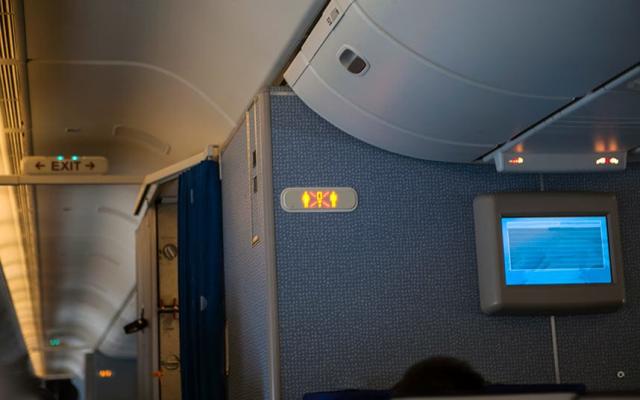Smart phones, smart homes, smart cars — everything in your
life is getting increasingly more intelligent. And that includes our
bathrooms; faucets, mirrors,
and toilets are getting connected. That’s right, the loo, the WC, the John —
the thing you spend a fair amount of time up-close and personal with daily,
whether performing bodily functions or catching up with Facebook. But for a
technology that’s hundreds of years old, with seemingly no changes since it was
invented in the 16th century, does the toilet now need fixing?
Actually, our porcelain gods have been upgrading themselves
all along — it’s just that you haven’t been paying attention. After all, nobody
really stick their head into the toilet to see what’s new. Since Sir John
Harrington invented the first flush toilet 1596, the fundamental technology has
remained the same, but the throne itself has gone through a few iterations.
Today, the most high-tech of toilets can cleanse themselves (and the humans
that sit on them), play music, prevent bacterial build-up, and flush minimal
amount of water. Oh, and get your Bluetooth ready — they are becoming another
node in the Internet
of Things. Here’s a look at the smart toilets of today, and where they are
going in the future.
ONLY IN JAPAN
Perhaps the company most associated with smart toilets is
the Japanese manufacturer of plumbing fixtures, Toto. Walk into its Manhattan showcase gallery
and you’ll be startled by the rows of pristinely white toilets lifting their
lids in unison as they sense you coming. This otherworldly greeting is not just
a cool feature, but a hygienic one: no need to touch the lid.
Sit down, and you’ll realize the seat warms up to your body
temperature. And while there’s an obligatory roll of toilet paper on the wall,
it’s not really needed. Toto’s famous Washlet will wash your behind and then
blow warm air on it — to dry you off. You are, however, in full control
of that cleansing operation: You can select your water streaming angles,
pressure, temperature, and other options from the silvery remote controls
conveniently placed on the wall. The abundance of options may be slightly
overwhelming at first, but worry not: getting toilet trained in the 21st
century is pretty pampering.
Eliminating use of toilet paper and wet wipes isn’t only
eco-friendly and safer for municipality sewers,
it’s also critically important for the elderly or the injured. If your mobility
and dexterity are limited due to illness, surgery, or age, the self-wiping
maneuver can be quite challenging, if not impossible. Toto takes that function
very seriously: The company’s toilet testers actually wear special restrictive
bodysuits to mimic the mobility loss, in order to perfect the toilet designs
and operations accordingly.
Toilets have been getting smarter — it’s just that you
haven’t been paying attention.
More novelties are coming down the pipe. If you noticed, the
water in your regular toilet typically flushes down from underneath the rim —
that overhanging circular ring underneath which you have to periodically scrub.
Sometimes that rim flush cleanses the bowl fully, and sometimes you must reach
for the brush and destroy the evidence that stuck. Toto’s latest tech all but
eliminates that annoying act. With Tornado Flush, the water is injected into
the bowl through powerful nozzles that create a centrifugal rinse in which the
water spins around the bowl multiple times, taking every bit of waste with it.
“The water circumnavigates the bowl, which improves
cleaning,” explains Bill Strang, engineer and president of operations at Toto USA. It also reduces the amount of water
used. With the older tech, every drop of water cleaned only four to five inches
of the shiny porcelain surface. With the tornado action droplets scrub 18
inches each.
But the magic doesn’t end there. After cleaning you, the
toilet also cleans itself. After each use, it sprays its bowl with electrolyzed
water, created by a built-in pair of electrodes.
“Electrolyzed water becomes reactive,” Strang explains — and
dissolves any organic matter that may have stuck to the surface. “So you have a
clean bowl in the next visit, no matter what occurred in the previous visit.”
TOTO
Overkill? Not if you consider the Japanese’s obsession with
good hygiene and germ fighting. On the streets of Tokyo or anywhere in Japan,
for that matter, people wearing masks to avoid spreading germs is a common
sight. This ideology flows to Japanese toilets where tech isn’t used just for
convenience, but to create a healthy lifestyle.
Toto is the world’s larger maker of toilets, but it also
makes other high-end bath fixtures. Read about its new Flotation
Tub.
COMING TO AMERICA
Toto’s Washlet, used all over Japan — from luxury hotels to
fast-food restaurants — has been available for several decades, but in America
its adoption has been slow. Asian and European countries tend to lead the way
while we, apparently, lag behind on new home tech, and on loo innovations in
particular.
But in the past few years, manufacturers are seeing
increased interest in toilet upgrades. According to Kohler, the American
bathroom equipment manufacturer, 83 percent of Americans want better toilet
experiences in terms of cleaner feels and better smells, and 67 percent think
bidets would help with that.
According to Kohler, 83 percent of Americans want better
toilet experiences.
Part of it is that people are traveling more and seeing
other options, says Kohler’s principal engineer Dan Halloran. Nearly 44 percent
of travelers have used a bidet, and even many of those who don’t travel much
have heard of the bidet concept.
American consumers and home builders may have been somewhat
behind on their bathroom novelties, but U.S. manufacturers have not. Kohler’s
latest model, NuMi, a slick ultra-modern toilet can tell your gender by the way
you stand up to it, which then lifts the seat accordingly. Equipped with a
cleansing seat, it comes with a compact, phone-size remote control that adjusts
water and warm air options. It also connects to your phone via Bluetooth and
can play music. Whether you’re into the classics or hip-hop you can answer your
nature calls to your favorite tunes. Although dancing on your throne may be a
bit messy.
Kohler’s latest models also feature smart flushing methods,
such as Revolution360, in which the water does circular rinsing similar to
Toto’s Tornado Flush, rather than simply sliding down the sides. Another tech,
part of the Corbelle model, is AquaPiston, a patented solution that uses the
hydrodynamic properties of water to create a powerful flush without added force
or pressure. Halloran says that the team took their inspiration from
waterfalls.
“If you look at a waterfall, you’ll see that water has a
natural cascading arch,” Halloran explains. “There’s a natural arch of flow
inside of a toilet tank also, and we matched it with the shape of our valves.”
KEEPING IT CLEAN
Optimizing cleaning is a big focus in general. Pouring loads
of harsh chemicals into the toilet harms wildlife. Crawling on all four around
the ivory thrones to dust off their awkwardly shaped pedestals annoys humans.
Today, people have neither the time nor desire to give cleaning much thought.
It has to be easy and convenient.
The manufacturers have taken note. The new models feature
the so-called “skirted” designs that make exterior cleaning easy. The bowls’
round or square bodies hide the toilet pipes or “guts” within them. The
“skirts” extend down to the floor and eliminate the need to stick your head or
duster underneath the porcelain curves.
Kohler continuous clean toilet Kohler
Keeping the bowl’s interior squeaky clean is harder. After
all, it interacts with much yuckier substances. Kohler uses the Continuous
Clean coat, which rinses a bowl with a cleaning solution after each use.
Ever dropped those cleaning tablets into your toilet tank to
get rid of the nasty brown build-up?
“You forgo your manufacturer’s warranty when you do that,”
says Victoria Hafenstein, Kohler’s public relations specialist, because the
chemicals not only destroy bacteria but also chip away at the flushing mechanism
inside. So Kohler designed a separate interior chamber where continuous
cleaning tablets can reside safely.
”[Smart toilets] could gather your key metrics, and perhaps
submit them to your medical provider to diagnose a problem.”
Toto solves that problem in an eco-friendly way, by coating
the bowl’s surface with a special titanium dioxide glaze that has hydrophilic
and photocatalytic properties. Sounds too tongue-twisting for a toilet? It’s
also quite powerful. Hydrophilic surfaces attract water droplets rather than
letting them bounce over — to scrape off the residue material more efficiently.
Photocatalytic means that, when activated by an ultraviolet light, the surface
layer can destroy the bacterial build-up. Where does the UV light come from? It’s
built into the toilet, of course.
“It turns on once a day, typically at night and shines for
about 20 minutes,” Toto’s Strang says — as another self-cleaning action. (It
also gives the saying, “where the light doesn’t shine” a whole new meaning.)
TOTO Washlet
How much would it cost to equip your house with a smart
john? The prices vary. Kohler’s basic cleansing seat can be installed on
any toilet for a mere $169, but it won’t feature warm water or convenient
button controls — although they can be added for a few extra bucks. The NuMi
costs $7,500.00. Toto’s latest Washlet model, the Neorest 750H, lists for
$10,200, and has all the aforementioned Toto tech. But for the budget minded,
you can purchase a basic Washlet add-on seat starting at $500.
These are premium products, however; if demand for smart
toilets increase, expect more options and lower prices.
Short on time? Here’s how to “fake
clean” a bathroom.
TOILETS AS HEALTH CENTERS
The really smart future toilets may also be able to monitor
your health. Urine and excrement are excellent substances for measuring your
metabolites, infections, sugar levels, intestinal microbiome and even some
cancer precursors. Toto demonstrated these capabilities in its
Intelligence-series of smart toilets, which was only available in Japan in
limited quantities.
Unfortunately, this ultra smart tech won’t hit the stores
any time soon because diagnostic equipment must undergo a rigorous and lengthy
approval process by regulatory agencies in many countries. But conceptually,
such capabilities can certainly be built, experts say.
TOTO
“There’s an opportunity to gather your key metrics and have
a dashboard that allow you to see how these metrics change, and perhaps submit
them to your medical provider to diagnose a problem,” Kohler’s Halloran says.
He likens the concept to FitBit that can gather your vitals to help you make
better decisions about your wellbeing. At some point, the future toilets might
join that monitoring paradigm too.
We wouldn’t be surprised if a voice assistant also gets
implemented. Forget to flush the toilet? Imagine asking Alexa to do it on your
phone, as you dash out the door.
source: https://www.digitaltrends.com/cool-tech/the-modern-toilet-in-our-homes-and-businesses-have-evolved/
by Lina Zeldovich
http://www.thisoldtoilet.com












